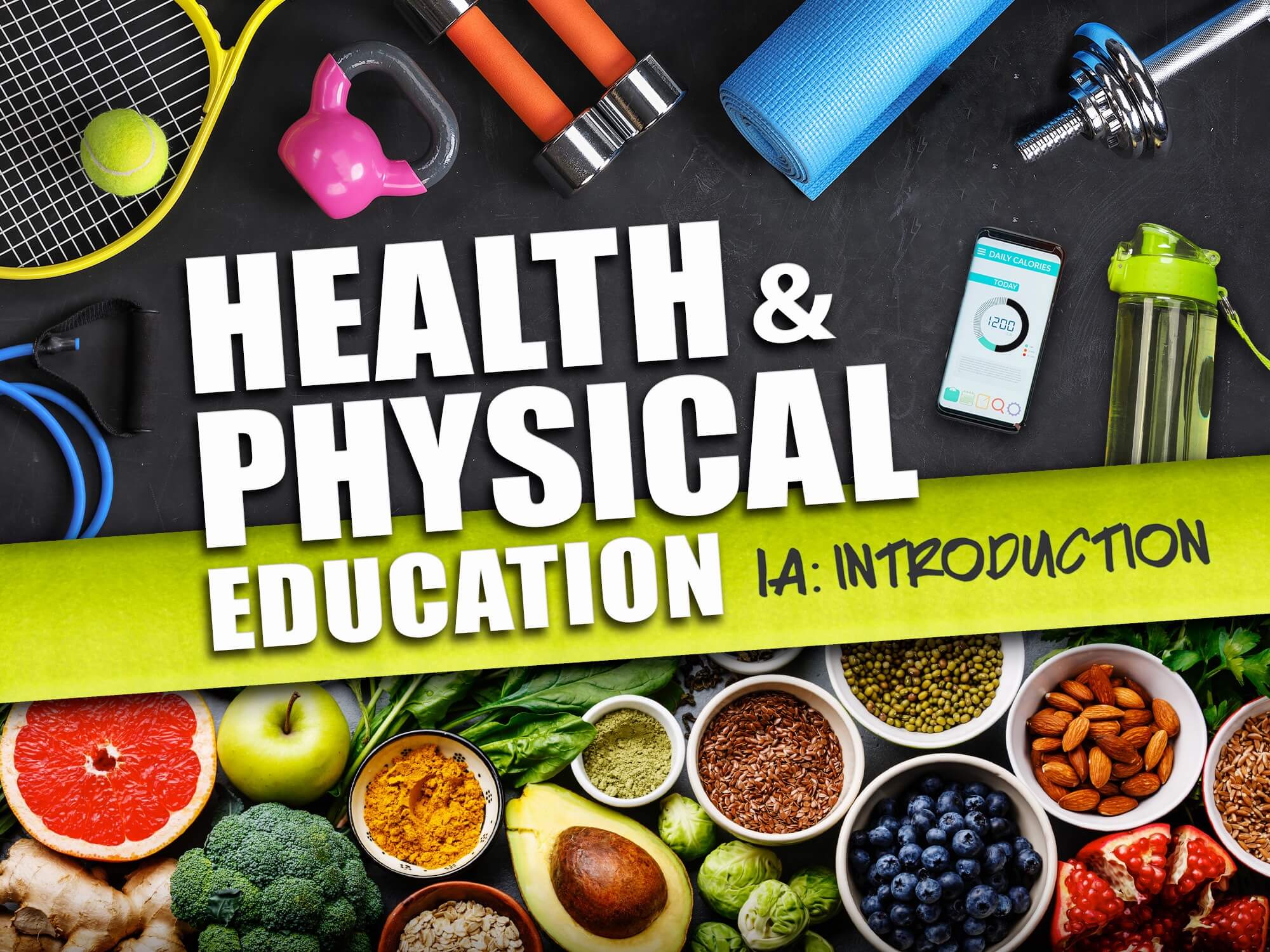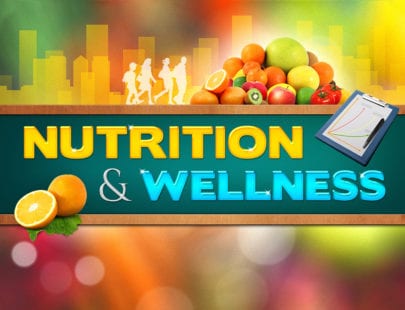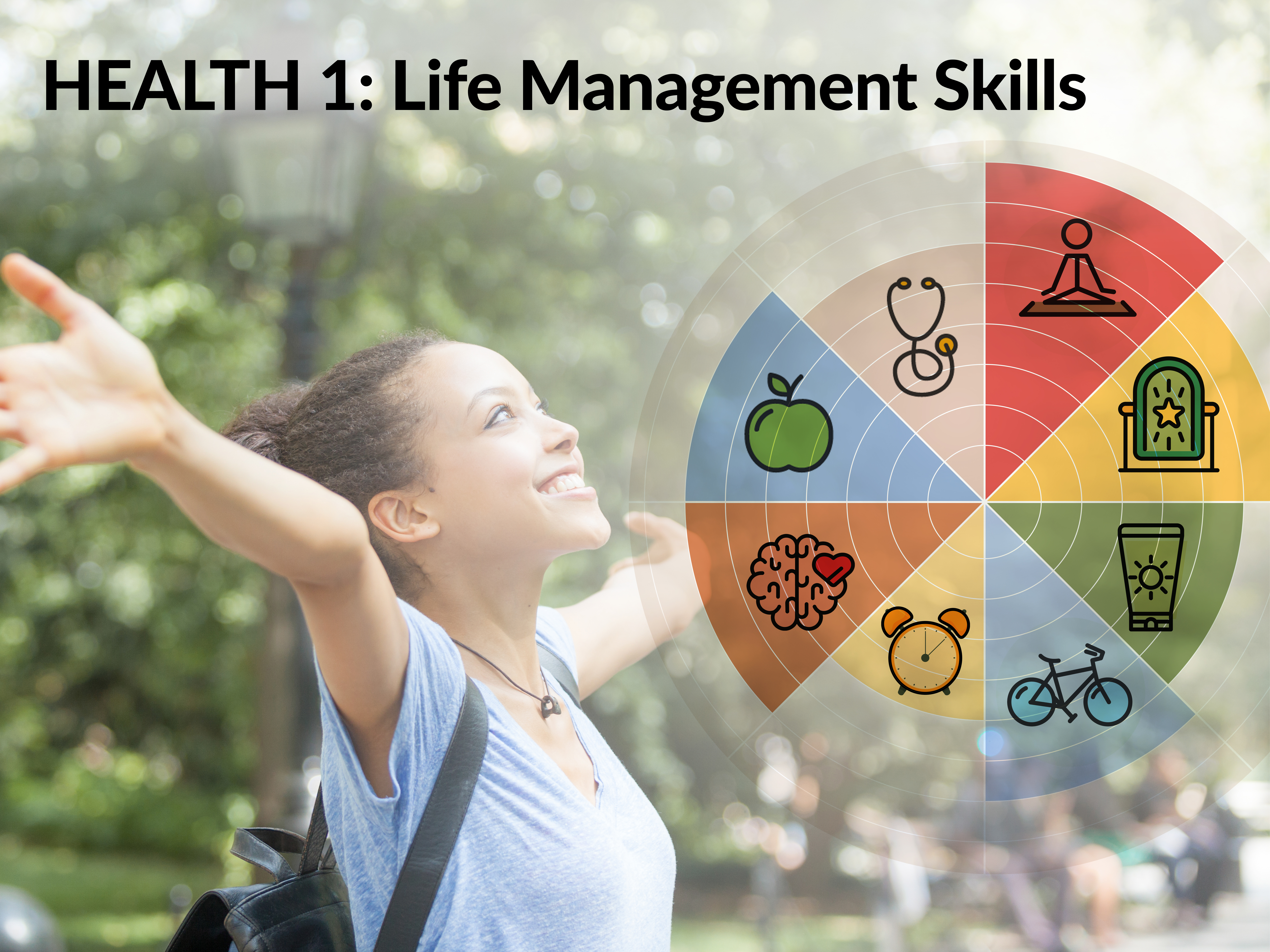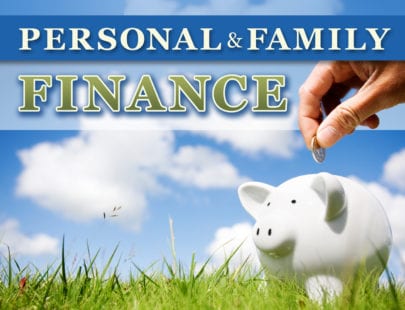
Health & Physical Education 1a: Introduction
Your health is more than skin deep- or should we say muscle deep? There are many factors that influence your fitness from biological predispositions to the foods you eat, the sleep you get, your psychology, and more! This course will go beyond the superficial of fitness and dig into the science behind it. You will explore the basics of how to assess your baseline fitness, design and implement a fitness plan, fuel your body to achieve your fitness goals, and stay safe while improving your health. Physical fitness is a journey, not a destination: start your expedition now!
Units at a Glance
Unit 1: What is Physical Fitness?
If you could increase the longevity of your life by studying one topic, would you want to?
“Yes, of course” is the likely response, yet life can be busy with so many things competing for our attention. Learning and practicing fitness, however, is a lifelong skill that only serves to help us, even if getting started seems overwhelming or stressful. While we all have some basic understanding of what it means to be fit, we often don’t consider the entirety of the term. Being fit goes beyond how you look and involves how your body functions and how you feel. It includes some biology, nutrition, psychology, and more. Even though it may seem complex, the benefits are vast, and being fit correlates to a happier, healthier, and longer life. Who wouldn’t want that?
What will you learn in this unit?
- Describe the five components of physical fitness
- Analyze the benefits of physical fitness
- Explain the relationship between physical fitness and health
- Identify the precautions that need to be taken in order to safely exercise
Unit 2: The Science Behind Fitness
We’ve all experienced it – our alarm goes off or it’s time to gear up for our afternoon run and the motivation is just not there. Afterall, does it really matter if we exercise and how, exactly, does being fit help? The key to understanding fitness and its benefits lies within a solid understanding of our bodies and how they work. To begin this journey, we must realize that our bodies contain multiple systems. Here we will focus on two of those—the cardiovascular and muscular systems – as we discover why cardiovascular health is so important and how muscles get stronger. You’ll be amazed at what you can accomplish when you truly understand what happens when you care for and utilize your body properly!
What will you learn in this unit?
- Recognize the major systems in the body and how they are impacted by physical fitness
- Understand how the components of fitness are improved through training and exercise
- Identify the problems related to low cardiorespiratory endurance, muscular strength, or endurance and flexibility
- Explain the physiological effects of exercise
- Determine the importance of nutrition as it relates to health
Unit 3: Taking Fitness to the Next Level
Now that we understand the basics of fitness, we are ready to take it to the next level. But how do we do that? First, we will consult several fields of science—physics, biomechanics, and physiology—in our quest to better understand our body and its reactions to the various forces and demands brought upon it in our exercise and training endeavors. Once we have a more robust understanding of all that happens in us and to us when we work out, we will be more inclined to stick with it and be able to troubleshoot any problems that come our way. Afterall, knowledge provides the power needed to propel us into a lifetime of fitness!
What will you learn in this unit?
- Examine the skill-related components of fitness and their relationship to performance
- Compare and contrast the health-related and skills-related components of fitness
- Understand the biomechanical principles related to exercise and training
- Apply the principles of training to personal fitness goals
Unit 4: Planning for Fitness: Upgrading Your Life
What’s important to consider as you make fitness an integral part of your life? First, there’s yourself—your thoughts, feelings, strengths and weaknesses should be taken into account. You start where you start, and a little attention given to who you are now will go a long way towards shaping what your future fitness looks like. Next, there are practical tools that you may need. Time-management skills and keeping track of your progress are likewise essential, but don’t worry, we will walk through those step-by-step. While some enter fitness with lofty goals, setting yourself up for a win also involves thoughtfulness toward what you are fueling your body with and what it needs to meet the demands of life. Get ready – it’s a journey that is well worth the effort!
What will you learn in this unit?
- Understand the connections between self-perception, body image and good health
- Employ effective time-management skills
- Analyze methods of weight control
- Explain myths associated with fitness and nutrition
Unit 5: Hit the Ground Running: Setting Goals and Making a Plan
It’s time to get practical. What’s the best way to get started on the road to better fitness? You guessed it – set goals for yourself! Goals are game-changers and setting them will bring the focus you need to determine what success looks like for you. Once you’ve set your goals, you will need a plan to get them accomplished, one that is both specific and realistic. Tailoring your fitness plan to meet your needs and skill level, while making gradual progress, is the key to success. Once you have all the right things in place, you will need to know what to expect. Will you feel like following your plan every day? Likely not! Here, we’ll also discuss motivation and learn some tricks to help you maintain momentum when the going gets tough. This is as close to having a real-life personal trainer as you can get so put on your gear and get ready to goal set!
What will you learn in this unit?
- Identify and understand the risk factors that affect physical activity and health
- Develop fitness goals that are gender, age, and skill appropriate
- Determine and modify a personal fitness program that meets your specific needs
- Apply strategies for setting appropriate fitness goals
Unit 6: How Has Modern Technology Changed Fitness?
Fitness and technology—how do they work together? After we examine the past, stopping to explore notable advancements that have impacted the fitness world, we’ll consider how our health, fitness, and nutrition have been significantly changed by technology. From real-time exercise programs that foster instructor support and a fitness community to apps that can act as our cooking instructors and healthy food advisors, there’s no question that various tech tools have the ability to change our lives and how we approach our health for the better. Finally, we’ll work together to apply this technology on a personal level. The options are endless—and none of them require tech to be your specialty. Rather, an open mind and a keyboard will lead you to the many possibilities that await to help you meet your personal goals.
What will you learn in this unit?
- Explain the significant developments in fitness over time
- Determine how technological advancements have impacted health and fitness
- Evaluate how modern technology has impacted nutrition, including diet and wellness
- Use available technology to enhance a personal fitness program
Unit 7: Fit for Life
The reasons to embrace fitness are endless—feel great, sleep well, think clearly, live happily: there’s no reason to delay any longer. It’s time to work according to your personal goal plan and discover the best version of yourself. Ready, set—but wait! Before you rush out onto the training field, let’s take a knee. In competitive sports, before you get to the big game, you put in a whole lot of practice and conditioning, and the results of your efforts aren’t immediately visible. You do this so that when it comes time to run a play, you can do it safely and fluidly, almost without thinking about what your body is doing. Personal fitness is no different: You have to build a plan that includes all the pieces you will need before you reach for greatness. Making the most of your fitness time is what we will focus on now that you’re ready to take your fitness to the next level. Let’s go!
What will you learn in this unit?
- Analyze your current fitness program and add skill-related specifics
- Create a comprehensive fitness plan that utilizes the principles of training
- Implement a specific fitness program and make adjustments as needed
- Determine several benefits of participation in physical activity
Unit 8: Becoming a Fit Community
Why workout together as opposed to alone? The obvious answer is that because humans are social beings who desire connection, it’s more enjoyable for us to exercise with someone else. Perhaps a bit surprising, though, is to learn that we perform better when there’s a little friendly competition or accountability to help us stick to our commitments. However, when we do anything as a team, we must rely on our social skills, including good communication and conflict resolution so that we are not taken by surprise when differences arise or problems surface. We will want to consider how to be a great teammate or partner and use the ethics and etiquette of a sport to embody sportsmanship so that we play our part well. When we engage in communal fitness, everyone benefits—as the sum is always greater than its individual parts.
What will you learn in this unit?
- Explain the benefits of communal fitness
- Determine the importance of ethics, rules, teamwork, and sportsmanship in fitness
- Recognize and resolve conflicts during physical activity
- Identify the opportunities for fitness in and outside of school
Required Materials
Physical
- Scale for weight measurement
- Yardstick or cloth measuring tape
- A timer: can use one on a smartphone, computer, or analog clock
- Pen/pencil and scratch paper
- Masking or painters tape
- Workout gear (gym shoes, athletic clothes, etc.)
- Videorecording device
- Two place markers of some sort: tape, rocks, cones, etc.
- A small notebook and pen (something to make notes on)
- A planner or calendar
Software
- Word processing software
Other
- Fitness Inventory
Optional
- Digital design application
- Camera or scanner to upload image of poster



